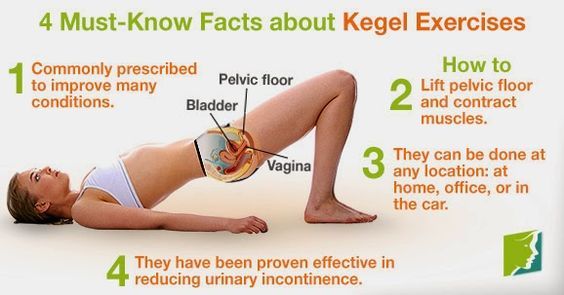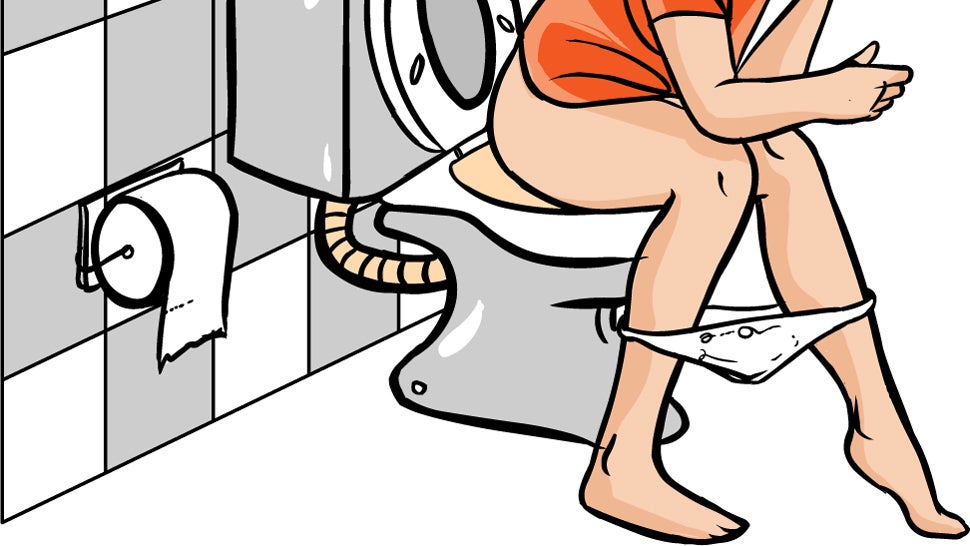How to relax your pelvic floor muscles
How To Relax Your Pelvic Floor
WHAT IS THE PELVIC FLOOR AND WHY SHOULD I RELAX IT?
The pelvic floor is a web of muscles that acts as a sling, supporting your bladder, bowel, and uterus. It is responsible for helping you control your bladder and bowel, and also plays a role in sexual intercourse. Many women experience pelvic floor issues, such as incontinence, as a result of childbirth, obesity, chronic constipation, or other strains put on the pelvic floor. Often, a weakening of the pelvic floor causes these issues, but did you know that having a pelvic floor that is too tense can also create problems? Incontinence, trouble emptying your bladder, and even pain during sex can be signs of a pelvic floor that is too tense.
Luckily, pelvic floor tension is a problem that you can do something about. Below are some simple exercises that may help you to relax your pelvic floor muscles. These can all be done in your home, discreetly, and with no equipment necessary.
Note: It is always recommended to consult a pelvic floor physical therapist prior to performing exercises related to the pelvic floor. A physical therapist can provide you with a proper diagnosis and put you on a custom treatment plan just for you! Find a physical therapist in your area here!
DIAPHRAGMATIC BREATHING FOR PELVIC FLOOR RELAXATION:
The diaphragm works in synergy with the pelvic floor and helps to promote muscle relaxation. This is important for decreasing pain and promoting optimal muscle function.
- Place one hand on your chest and another hand on your belly, just below your rib cage.
- Take a deep breath in to the count of three, and then exhale to the count of four.
- When you inhale, your pelvic floor relaxes, and as you exhale, your pelvic floor returns to its resting state.
- Practice this breathing for 5-10 minutes each day.
Note: You’ll know that you are using your diaphragm correctly if you feel the hand on your belly rise and fall.
NEED SOME EXTRA GUIDANCE? SIGN UP FOR OUR FREE 6-WEEK GUIDE TO BETTER PELVIC FLOOR HEALTH!
PELVIC GIRDLE STRETCHES FOR PELVIC FLOOR RELAXATION
All of the following positions are great for practicing diaphragmatic breathing!
HAPPY BABY POSE:
- Lie on your back.

- Open your knees wider than your chest and bring them up towards your armpits. You may hold your legs with your arms behind your knees or at your ankles, but try to keep your ankles over your knees.
- You can either hold this position or gently rock on your back from side to side
CHILD’S POSE:
- Start on your hands and knees.
- Spread your knees wide apart while keeping your big toes touching.
- Gently bow forward, moving your torso downwards, between your thighs. Keep your arms stretched out long and in front of you.
ADDUCTOR STRETCHING:
- Lie on your back with the soles of your feet together and knees out to the sides.
- This should be a relaxing position. If you feel a pulling along your inner thighs or in your pubic bones, place pillows under your knees for support.
PIRIFORMIS STRETCHING:
- Lie on your back with your knees bent.
- Place your left ankle on your right knee, like a figure four.
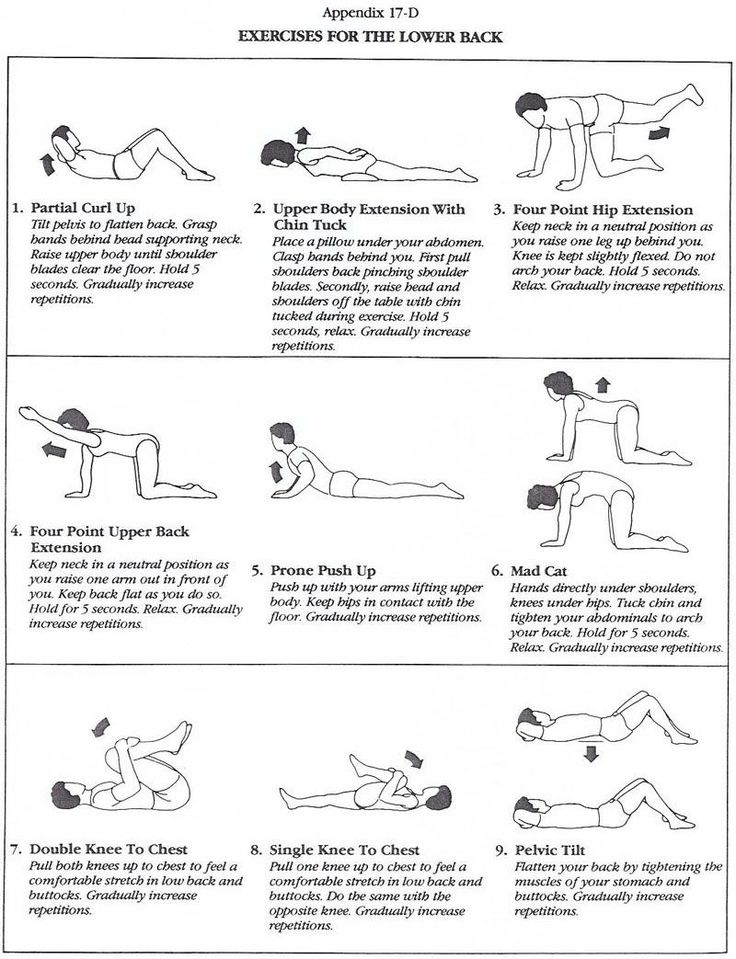
- Pull your right thigh toward your chest to feel a stretch on the outside of your left hip.
- Hold for 30 seconds, and then repeat on the other side.
SIGN UP FOR OUR FREE 6-WEEK GUIDE TO BETTER PELVIC FLOOR HEALTH!
Our six-week guided program provides men and women with actionable steps to help strengthen and relax their pelvic floor. Receive weekly tips, progressive exercise suggestions, and more with this helpful guide! Click the button below to sign up!
SIGN UP FOR THE 6 WEEK GUIDE TO BETTER PELVIC FLOOR HEALTH!
5 Ways to Relax Your Pelvic Floor!
By PHRC Admin
Do you ever wonder why it is important to relax your pelvic floor? Even if you know you should, do you find yourself wondering how to do so?
As a pelvic floor physical therapist, I often have patients who wonder what the value is in being able to relax the pelvic floor. In a culture that places most value on exercises that strengthen, it is important to understand why and how relaxation is just as important.
If you are someone who is just interested in building strength, I will speak to that first. In order to have muscles that can generate a good amount of power, it is also important that those muscles have what is called a good “length-tension” relationship. This term means that when muscles sit in too short of a resting state, they are not able to produce effective power. In other words, a tight muscle is not a strong muscle. If your pelvic floor is tight throughout the day and you never allow it to relax, you will not be able to build strength.
If you are someone who is in pain, relaxation is key to your recovery. When muscles are tight and shortened, it decreases the ability for blood and oxygen to get to those areas. This makes both the muscles and nerves in that area unhappy and painful. Another aspect of the body that is affected with tight muscles is the fascia. You can read more about fascia and its role in pelvic pain here. When fascia is tight, it also decreases blood flow and oxygen, contributing to pain. In order to help your pelvic floor muscles be happy and healthy, you need to be able to relax and release.
In order to help your pelvic floor muscles be happy and healthy, you need to be able to relax and release.
Now that I have hopefully convinced you that relaxing your pelvic floor is important, the big question is how! Here are five ways you can get started on your journey to relaxation:
- Diaphragmatic Breathing
The importance of breathing and its relationship to the pelvic floor cannot be stated enough. Unlike other muscles in the body, the pelvic floor muscles are directly influenced and impacted by how we breathe. You breathe approximately 20,000 times a day, so it’s a good investment to make sure you are doing it right!
With diaphragmatic breathing, the goal is to expand the diaphragm by breathing into the rib cage and belly. Try walking through these steps:
- Lay on your back with your knees bent so your low back can rest in a neutral position.
- Place your hands on your rib cage and try to expand the ribs into your hands as you breathe in through your nose.

- Breathe out through your nose slowly, making the exhale longer than in the inhale while letting the rib cage and belly softly fall. Repeat 10 times.
This breath is powerful for two reasons. The first is that your diaphragm and pelvic floor like to copy each other. If you are able to successfully expand and drop the diaphragm as you inhale, your pelvic floor will also expand and drop. You may not feel much during this exercise, but if you can visualize the muscles expanding without feelings of tightening or contracting, you are at a good place.
The second reason this breath is powerful is because it helps to regulate your nervous system. You can learn more about the importance of this with muscle pain and tightness here.
- Child’s Pose
Many yoga-inspired poses can help with relaxation of the pelvic floor. One great pose for this is child’s pose:
- Start on hands and knees and bring your feet together while widening your knees.
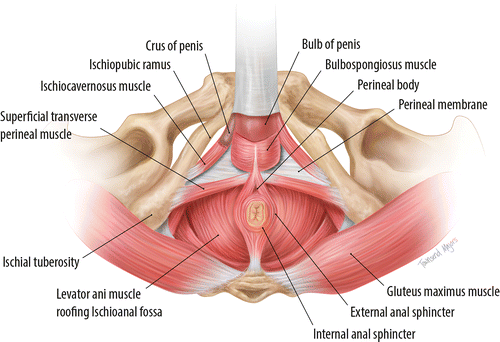
- Slowly send your hips down to your heels- if they do not touch, place a bolster or pillows underneath to support your hips.
- Walk your arms out long and lower your head onto the floor- place a pillow under your head if you do not make contact with the floor.
- Breathe into the back of your ribcage (diaphragmatic breathing) and imagine your sitz bones (boney ends of the pelvis) separating gently on every inhale.
- Hold for a minimum of 30 seconds while continuously performing diaphragmatic breathing. Repeat 1-2x a day.
During child’s pose, you have a great opportunity to play with visualization of the pelvic floor. As you imagine the sitz bones separating on every inhale, you may begin to develop a sensation of the anus bulging or expanding. This can be a signal that your pelvic floor muscles are relaxing. If you do not feel this right away, try not to get frustrated. Just like any other exercise, this work takes practice and patience.
- Happy Baby
Another great pose for stretching and releasing the pelvic floor, happy baby can feel nice if child’s pose does not feel accessible to you at this time.
- Start on your back and draw your knees into your chest.
- Reach along the inner thighs with your arms to grab each ankle or inner arch of your foot, whichever is accessible for your body.
- Open your feet to the sky while continuing to bend your knees and drive them into your armpits.
- Breath into your rib cage and belly while imagining the pelvic floor expanding and releasing.
- Hold for at least 30 seconds. Repeat 1-2x a day.
If happy baby does not feel relaxing, play with propping yourself to provide support. This could mean putting a bolster underneath your hips, or even placing your feet on a wall or couch/chair so you do not have to feel like you are straining to keep your legs up. As with any exercise, if this does not feel good on your body, do not force yourself to stay in this pose.
- Yogi Squat
If you would like a pose that you can just drop into in the middle of the day without having to fully get on the ground, yogi squat may be for you. This pose requires more hip, knee, and ankle mobility so it is not appropriate for everyone. If you have discomfort, please modify or try the other poses in this list.
This pose requires more hip, knee, and ankle mobility so it is not appropriate for everyone. If you have discomfort, please modify or try the other poses in this list.
- Start standing with your feet a little wider than hip distance apart and the feet turned out about 45 degrees.
- Slowly bend your knees until you can sit all the way down while keeping your heels down. If your heels cannot stay down, try placing a pillow or half-cut foam roller underneath your heels for support.
- Once you are down, bring your hands together at your chest and use your elbows to gently push the thighs wide, feeling a stretch at the inner thighs.
- Breath into your rib cage and belly, and visualize the pelvic floor dropping and expanding with every inhale.
- You may do this against a wall to support your back, or even sit on a bolster or yoga block to let your body release into the pose without tensing.
- Hold for at least 30 seconds. Repeat 1-2x a day.
Yogi squat is excellent for overall mobility of the lower extremity joints as well as the back and the pelvic floor.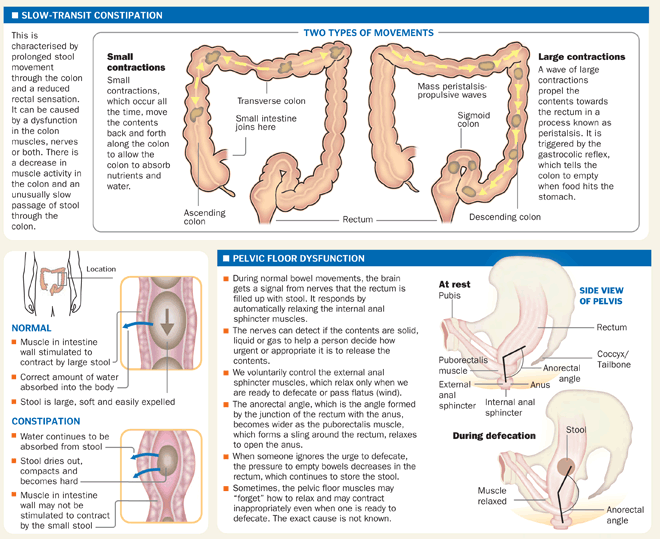 If this pose is available to you, dropping into it a few times through the work day can help keep tightness from building up throughout the day.
If this pose is available to you, dropping into it a few times through the work day can help keep tightness from building up throughout the day.
- Sphinx Pose
One area that is important to release when dealing with pelvic floor tightness is the abdominals. The abdomen is directly linked with the pelvic floor and often when one area is tight it influences the other. Trying a gentle abdomen stretch with spinal extension, such as sphinx pose, can be beneficial in finding full release.
- Lay on your stomach with your elbows bent right underneath your shoulders.
- Feel a gentle lift in the chest with the collarbone wide while keeping your hips grounded to the earth.
- Feel the soft stretch at the abdomen and notice if you are gripping your butt muscles.
- If there is any tension, wiggle your hips or your torso to shake it off.
- Return to your diaphragmatic breathing and notice any sensations of dropping or release the pelvic floor.
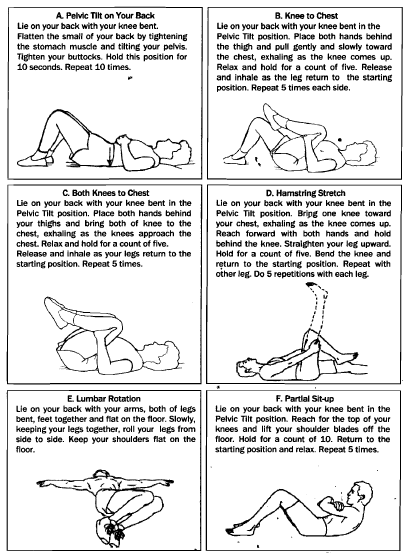
- Hold for at least 30 seconds and repeat 1-2x a day.
Pay attention to how your spine feels in the posture. Some people may not tolerate extension at the spine in which case the recommendation is to skip this pose. If you feel your gluteal muscles tightening and you are unable to get them to relax, just try squeezing and releasing those muscles for a few rounds before connecting it to the pelvic floor.
As with any generalized exercise program, some of these exercises may not be appropriate for every individual. We all have unique bodies with their own stories. It is important you listen to your body’s boundaries and respect limitations rather than try to push through them. This is deep, mindful work that requires truly connecting and engaging with your body’s intuition of what feels right.
If you are a visual and kinesthetic learner, I have also created a video that goes over each of the exercises so you can follow along! If you are still interested in learning more about what is right for your individual body and want more feedback, please consider booking a virtual appointment with me.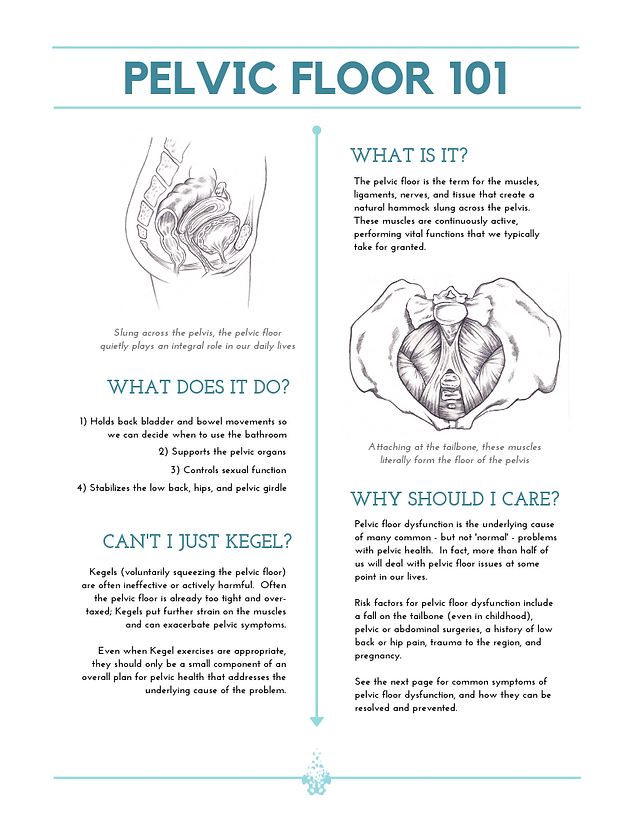 I am now offering one-on-one movement sessions to help you create a movement program that is right for you. These sessions can also serve as a guide to help you return to movement classes you might be interested in, such as yoga or pilates.
I am now offering one-on-one movement sessions to help you create a movement program that is right for you. These sessions can also serve as a guide to help you return to movement classes you might be interested in, such as yoga or pilates.
Lastly, if you are still unsure what you are doing is correct or are not experiencing any form of relief, please consider booking an appointment with one of our therapists at these locations. Nothing can replace the physical exam a professional pelvic floor therapist can perform to provide more answers and solutions for your pain. You are not alone and we are here to help.
______________________________________________________________________________________________________________________________________
Are you unable to come see us in person? We offer virtual physical therapy appointments too!
Due to COVID-19, we understand people may prefer to utilize our services from their homes. We also understand that many people do not have access to pelvic floor physical therapy and we are here to help! The Pelvic Health and Rehabilitation Center is a multi-city company of highly trained and specialized pelvic floor physical therapists committed to helping people optimize their pelvic health and eliminate pelvic pain and dysfunction. We are here for you and ready to help, whether it is in-person or online.
We also understand that many people do not have access to pelvic floor physical therapy and we are here to help! The Pelvic Health and Rehabilitation Center is a multi-city company of highly trained and specialized pelvic floor physical therapists committed to helping people optimize their pelvic health and eliminate pelvic pain and dysfunction. We are here for you and ready to help, whether it is in-person or online.
Virtual sessions are available with PHRC pelvic floor physical therapists via our video platform, Zoom, or via phone. For more information and to schedule, please visit our digital healthcare page.
In addition to virtual consultation with our physical therapists, we also offer integrative health services with Jandra Mueller, DPT, MS. Jandra is a pelvic floor physical therapist who also has her Master’s degree in Integrative Health and Nutrition. She offers services such as hormone testing via the DUTCH test, comprehensive stool testing for gastrointestinal health concerns, and integrative health coaching and meal planning. For more information about her services and to schedule, please visit our Integrative Health website page.
For more information about her services and to schedule, please visit our Integrative Health website page.
PHRC is also offering individualized movement sessions, hosted by Karah Charette, DPT. Karah is a pelvic floor physical therapist at the Berkeley and San Francisco locations. She is certified in classical mat and reformer Pilates, as well as a registered 200 hour Ashtanga Vinyasa yoga teacher. There are 30 min and 60 min sessions options where you can: (1) Consult on what type of Pilates or yoga class would be appropriate to participate in (2) Review ways to modify poses to fit your individual needs and (3) Create a synthesis of your home exercise program into a movement flow. To schedule a 1-on-1 appointment call us at (510) 922-9836
Do you enjoy or blog and want more content from PHRC? Please head over to social media!
Like us on Facebook,
Subscribe to our YouTube Channel,
and follow us on Twitter, Instagram and Pinterest!
Pelvic floor muscle dysfunction | FPA
Author - Natalia Reznik.
Pelvic floor muscle dysfunction is a common problem faced by approximately one fifth of the world's population. It is not life-threatening, but it significantly complicates it. In this case, you need to contact the experts. They provide potential clients information sufficient to independently make a primary diagnosis and take the necessary measures. nine0005
How does it work?
The position of our body is supported by a cylinder-like muscular frame (core). Its walls are made up of transverse, oblique and rectus abdominis muscles, multifidus muscles (deep back muscles) and muscles that straighten the spine. From above, the cylinder is closed by the diaphragm, and from below - by the muscles of the pelvic floor. It is a three-layer muscular plate stretched like a hammock from the pubic bone in front to the coccyx in the back. The thickness of the plate is about 1 cm. If all the pelvic floor muscles contracted separately, they would pull in different directions. However, they work together to support the bladder and intestines, the prostate in men, and the uterus in women, and therefore partly control the functioning of these organs. In addition, the pelvic floor muscles strengthen the rectal sphincter and urethra (Figure 1). nine0005
However, they work together to support the bladder and intestines, the prostate in men, and the uterus in women, and therefore partly control the functioning of these organs. In addition, the pelvic floor muscles strengthen the rectal sphincter and urethra (Figure 1). nine0005
The contractions of the pelvic floor muscles can be controlled by volition, but usually they contract unconsciously, coordinated with the work of the deep muscles of the abdomen and back and the diaphragm, and help control abdominal pressure during exercise. In an ideal situation, intra-abdominal pressure is automatically regulated. For example, when lifting weights, the core muscles work in ensemble: the pelvic floor muscles rise, the abdominal and back muscles retract to support the spine, and breathing is not difficult. If any of the core muscles, including the pelvic floor muscles, are weakened or damaged, automatic coordination is disrupted. Then, in situations that increase intra-abdominal pressure, there is a possibility of overloading the pelvic floor, it weakens and the pressure decreases.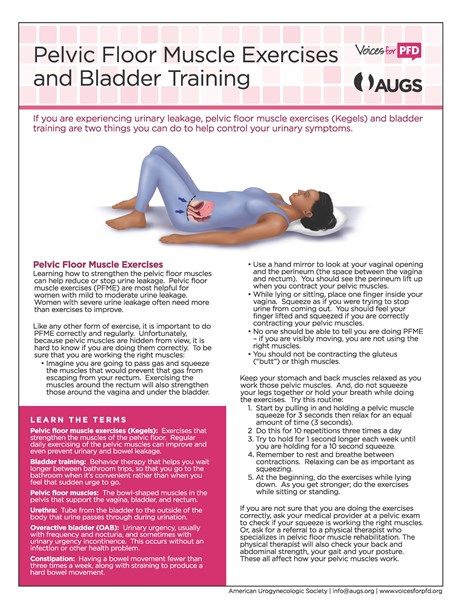 If this happens repeatedly, the stress on the pelvic organs increases over time, which can lead to loss of bladder or bowel control, or pelvic organ prolapse. nine0005
If this happens repeatedly, the stress on the pelvic organs increases over time, which can lead to loss of bladder or bowel control, or pelvic organ prolapse. nine0005
To work as part of the core, the pelvic floor muscles must be flexible, that is, able to not only contract and hold tension, but also to relax. Constant tension can cause muscles to lose flexibility and become very stiff, and stiffness of the pelvic floor muscles usually accompanies weakness, which can lead to urinary incontinence, pelvic pain, pain during intercourse, and difficulty urinating.
Symptoms of pelvic floor muscle dysfunction
-
Uncontrolled leakage of urine during exercise, laughing, coughing or sneezing (stress incontinence).
-
The need to go to the toilet frequently or urgently (urge incontinence).
-
Incontinence of gas and intestinal contents.
-
Difficulty emptying the bladder or bowels.
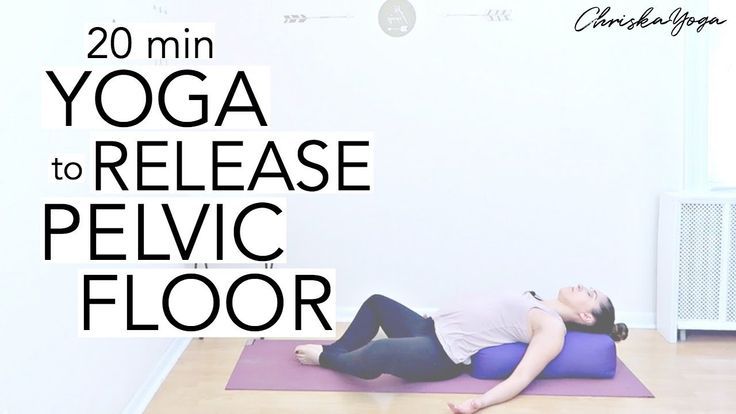 nine0005
nine0005 -
Prolapse of internal organs. In women, it is felt as a bulge in the vagina or a feeling of discomfort or heaviness. In men, there is a bulge in the rectum or a desire to empty the bladder, although there is no objective need for this.
-
Pain in the bladder, bowel, or back near the pelvic floor when doing pelvic floor exercises or during intercourse. nine0005
Experts emphasize that the above problems are not necessarily associated with weakness of the pelvic floor muscles, so their cause should definitely be found out. Diagnosis is by electromyography, ultrasound, or MRI.
Who is at risk?
Dysfunction of the pelvic floor muscles occurs when they are stretched, weakened, or too tight. Some people have weak pelvic floor muscles since childhood, but more often problems develop with age. The risk group is nine0005
-
pregnant women and women who have already given birth,
-
women who are going through or have gone through menopause,
-
women who have undergone gynecological surgery, such as removal of the uterus,
-
men who had their prostate removed
- nine0002 high-class athletes such as gymnasts, runners or trampoline jumpers.
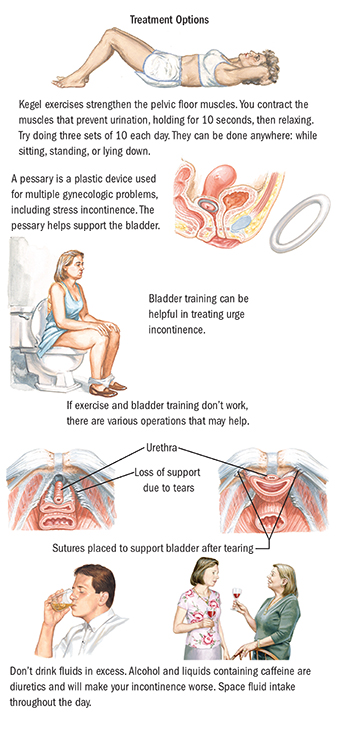
Additional risk factors include:
-
back pain,
-
pelvic trauma or radiation therapy,
-
constant constipation (you have to strain to empty your bowels), nine0005
-
chronic coughing or sneezing (asthma, smoking or hay fever),
-
being overweight or obese,
-
regularly lifting weights at work or in the gym.
Let's analyze these cases in more detail.
Pregnancy and childbirth affect the physical fitness of the pelvic floor muscles. The growing fetus puts pressure on the pelvic floor muscles. During pregnancy, the hormone relaxin is released, which makes tissues more elastic, allowing the muscles and ligaments of the pelvic floor to stretch during childbirth. Sometimes they remain stretched for a long time. The action of relaxin and fetal pressure prevents the muscles from holding the pelvic organs in the correct position.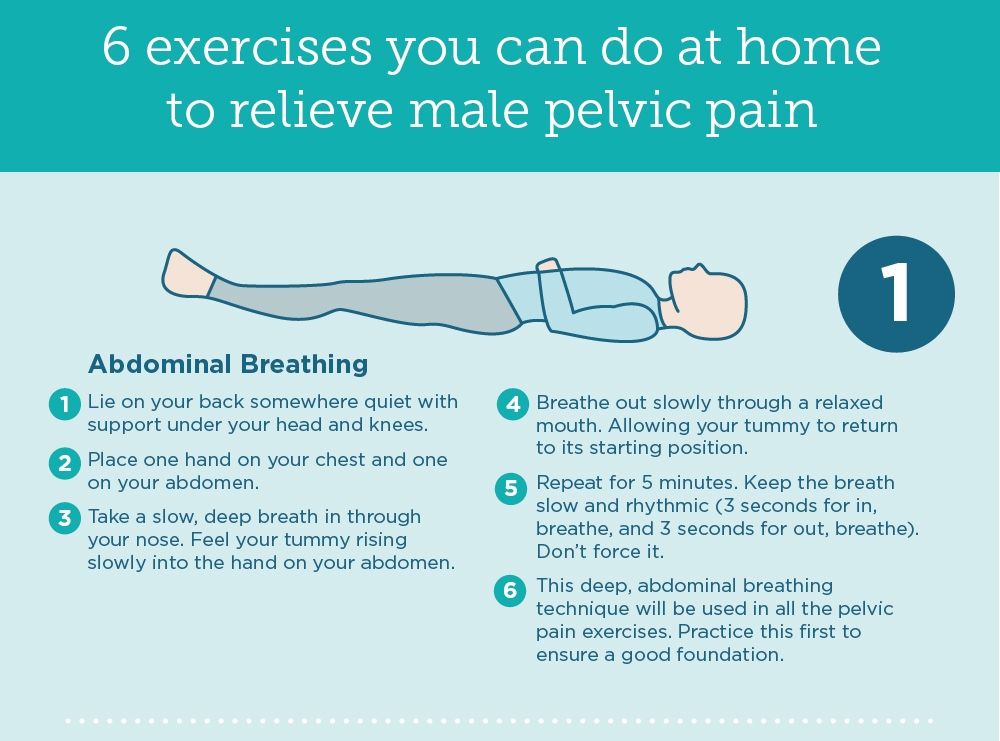 nine0005
nine0005
Women at greatest risk during pregnancy and childbirth are those who:
-
gave birth multiple times
-
gave birth with the help of instruments: forceps or a vacuum extractor,
-
the second stage of labor lasted more than an hour,
-
during childbirth, there was a rupture of the perineum, nine0005
-
the baby weighed more than 4 kg.
During menopause the female body undergoes significant changes. All muscles weaken, including the muscles of the pelvic floor. Because they support the pelvic organs, problems can arise in this area, such as difficulty with bladder or bowel control.
Menopause is often accompanied by weight gain, which also weakens the pelvic floor muscles. nine0005
The situation is also exacerbated by:
-
less elastic bladder
-
anal trauma due to childbirth,
-
chronic diseases (diabetes or asthma).

Gynecological or pelvic surgery such as hysterectomy or radiation therapy may deform the pelvic floor muscles and cause incontinence. nine0005
Incontinence is also common after prostate surgery . Most men regain full bladder control within 6 to 12 months, and exercise makes a big difference.
Professional athletes and just great fitness enthusiasts often experience constant strong pressure on the pelvic floor. As a rule, these are gymnasts, trampoline jumpers and runners, fans of games in which you often have to “knock” on the ground, such as basketball or netball. Athletes who lift weights or do high-intensity interval training also fall into the risk group. nine0005
Urinary incontinence may be common during these exercises, but it is not normal.
What to do?
Pelvic floor muscle dysfunction treat. There are surgical methods, but we will not discuss them. There is electrical stimulation, in which an electrode is placed on the vagina or rectum.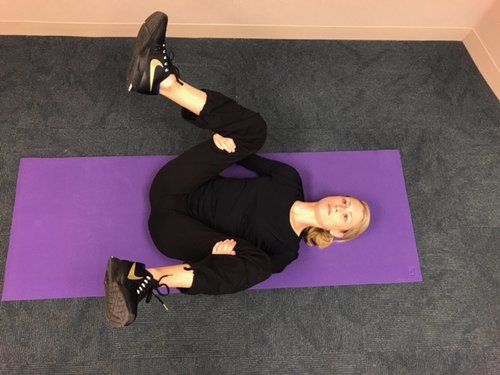 However, the ability of electrical stimulation to increase skeletal muscle strength is questionable, and side effects are common with this procedure. In most cases, patients complain of soreness, local irritation, pain and psychological discomfort. nine0005
However, the ability of electrical stimulation to increase skeletal muscle strength is questionable, and side effects are common with this procedure. In most cases, patients complain of soreness, local irritation, pain and psychological discomfort. nine0005
Drug therapy does not strengthen the muscles, but it can reduce pressure in the urethra at rest by increasing the tone of its smooth or striated muscles. Usually alpha-adrenergic agonists are used: ephedrine, norepinephrine or phenylpropanolamine; imipramine, clebuterol, duloxetine, estrogen. Clinical studies confirming the effect of these drugs are few.
The urethra is sensitive to the action of estrogen, data on its effectiveness are conflicting, and the use is fraught with side effects, such as an increased risk of coronary heart disease and cancer. nine0005
For incontinence, experts recommend bladder training - scheduled urination. Their essence is that the patient urinates according to an individual plan, at certain intervals, and restrains untimely urges by reducing the sphincter.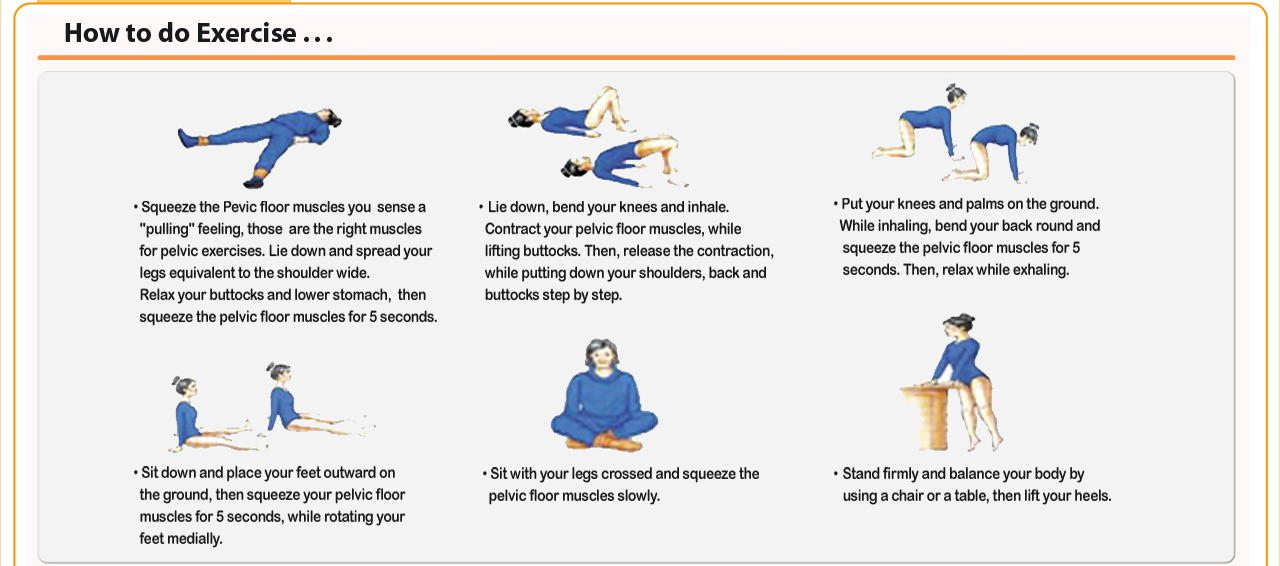 Gradually, the intervals between urination increase. It is believed that such restraint will increase the activity of the pelvic floor muscles. This method has been practiced since the 1960s, mainly for urge incontinence, but its effectiveness is questionable. nine0005
Gradually, the intervals between urination increase. It is believed that such restraint will increase the activity of the pelvic floor muscles. This method has been practiced since the 1960s, mainly for urge incontinence, but its effectiveness is questionable. nine0005
The method of first choice is exercises to strengthen the pelvic floor muscles.
How to train the pelvic floor muscles?
If the muscles are weak, they need to be strengthened. Muscles compress with an effort of will and try to keep it in this position for some time. The purpose of the exercises is to increase the tone and cross-sectional area of the pelvic floor muscles and the stiffness of the connective tissue and thus raise the pelvic floor. Exercises were first proposed in 1948 by the American gynecologist Arnold Kegel. By According to some reports, they are quite effective, and patients who perform them very rarely feel pain or discomfort. The frequency, intensity, and duration of exercise can vary, and there is no standard protocol.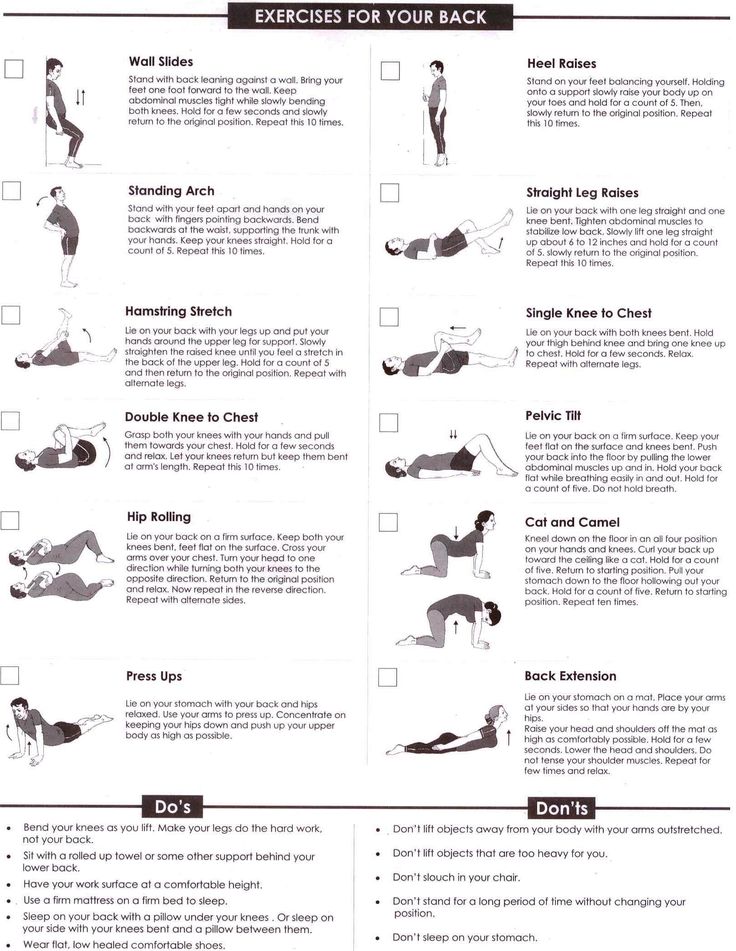 nine0005
nine0005
The key to success is to train exactly the muscles that you need. You cannot see them, but you can feel them. There are several ways to do this.
Feel the muscles - stop the flow
You need to try to stop or slow down the flow of urine in the toilet. This is not an exercise, but just a way to feel the muscles of the pelvic floor, to determine which muscles control the bladder.
Feel the muscles: visualization for women
Another method is to mentally stop urination and keep it in the body at the same time. This can be done lying down, sitting or standing with your feet shoulder-width apart.
-
Relax the muscles of the thighs, bottom and abdomen.
-
Squeeze the muscles around the anus as if trying to stop the flow of urine.
-
Contract the muscles around the vagina and pull it up into the pelvis. nine0005
-
Squeeze the muscles around the anus, as if trying to hold back gases.

-
The muscles around the anterior and anus should contract and retract into the pelvis.
-
Feel the muscles that contract during this complex, then relax them.
Feel the muscles: visualization for men
Men are invited to stand in front of a mirror without clothes and tighten the muscles of the pelvic floor. If done correctly, they will see the base of the penis retract and the scrotum rise. The anus will also retract, but that is not the purpose of the exercise. After relaxing the muscles, you should feel that you have let go.
Contracting muscles correctly
During exercise, only the muscles of the pelvic floor should work. The lower part of the abdominal wall will stretch and flatten, this is not a problem, since this part of the abdomen works together with the muscles of the pelvic floor. The muscles above the navel should be completely relaxed, including the diaphragm. nine0005
Try to gently tighten only the pelvic floor muscles so that they rise and contract while breathing freely.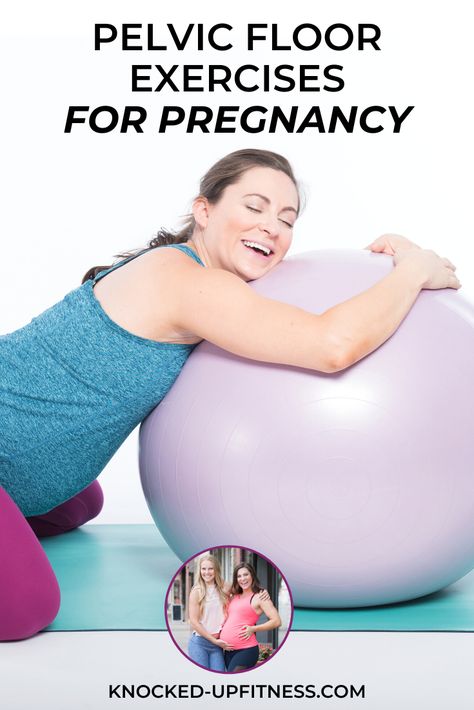 See if you can do it. After muscle contraction, it is important to relax. This will allow them to recover and prepare for the next cut.
See if you can do it. After muscle contraction, it is important to relax. This will allow them to recover and prepare for the next cut.
Often people from zeal also strain the external muscles, as a rule, the muscles of the abdomen, buttocks and adductors of the thigh. However, the joint contraction of these muscles along with the muscles of the pelvic floor does not support the internal organs. Only the internal muscles need to be strained. Improper exercise can be harmful (Fig. 2). nine0005
If you don't feel your pelvic muscles contract, change position and try again. For example, if you are sitting, try lying down or standing up. If this does not help, contact the experts. Studies show that more than 30% of women cannot properly contract the muscles even after they are explained in detail how to do it.
Training mode
Having learned how to properly contract the muscles of the pelvic floor, you can start training. Try to hold the muscles tight for up to 10 seconds before relaxing.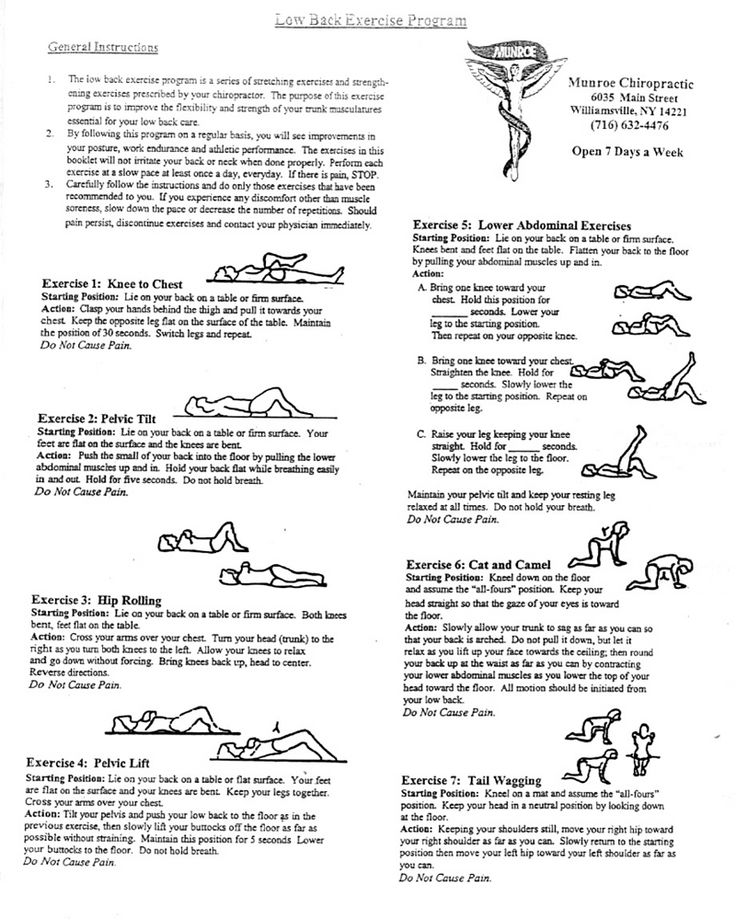 Don't forget to breathe while doing this. Repeat the exercise up to 10 times, but only as long as you can perform it correctly. Exercises can be repeated several times during the day. They can be done lying down, sitting or standing with legs apart, but the muscles of the thighs, buttocks and abdomen should be relaxed. nine0005
Don't forget to breathe while doing this. Repeat the exercise up to 10 times, but only as long as you can perform it correctly. Exercises can be repeated several times during the day. They can be done lying down, sitting or standing with legs apart, but the muscles of the thighs, buttocks and abdomen should be relaxed. nine0005
Typically, to achieve long-term effect of the exercise should be performed for at least 6-8 weeks, and preferably 6 months. On their own, they may be not particularly efficient. good Complementing this daily independent activity is a weekly instructor-led session. Exercises are performed standing, sitting, lying or kneeling. The muscles of the pelvic floor contract as much as possible and hold in this position for 6 to 8 seconds. After each long contraction, 3-4 quick ones are made. In each pose, 8-12 long contractions and a corresponding number of fast ones are performed. In this case, all contractions must be performed with the same intensity. nine0005
Sometimes people forget to do pelvic floor exercises, so it's best to associate them with some regular activity like eating or brushing your teeth.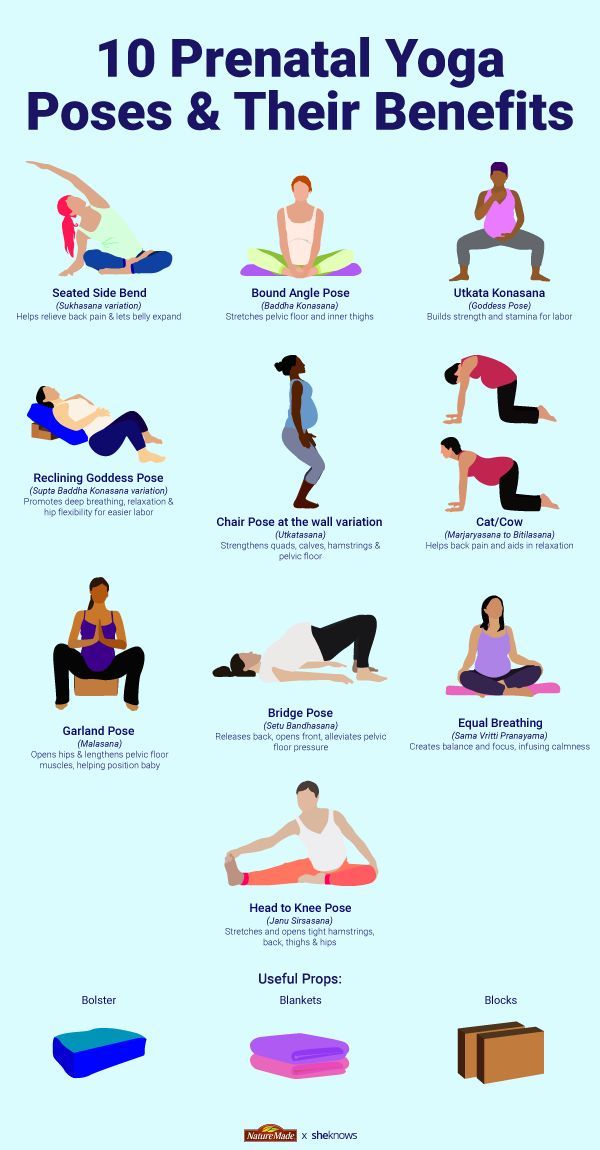 This is a great way to build exercise into a familiar set of routine tasks.
This is a great way to build exercise into a familiar set of routine tasks.
Women who have recently given birth are advised to reduce the load on the pelvic floor muscles in the first few months to allow them to recover.
Men who have had prostate surgery should start exercising as soon as their urinary catheter is removed (during exercise, it can irritate the bladder and cause discomfort). nine0005
Pelvic floor exercises and other physical activities
No matter how strong and strong a person is, if his pelvic floor function is impaired, it is necessary to restore it. Regular sports activities do not need to be abandoned, however, for all types of training - cardio, endurance training or strength training - the number of repetitions, sets and frequency of training should depend on the reaction of the pelvic floor. If necessary, you need to reduce the intensity, impact, load, number of repetitions or duration of the workout, and then, as the functions of the pelvic floor improve, gradually return to the previous regimen.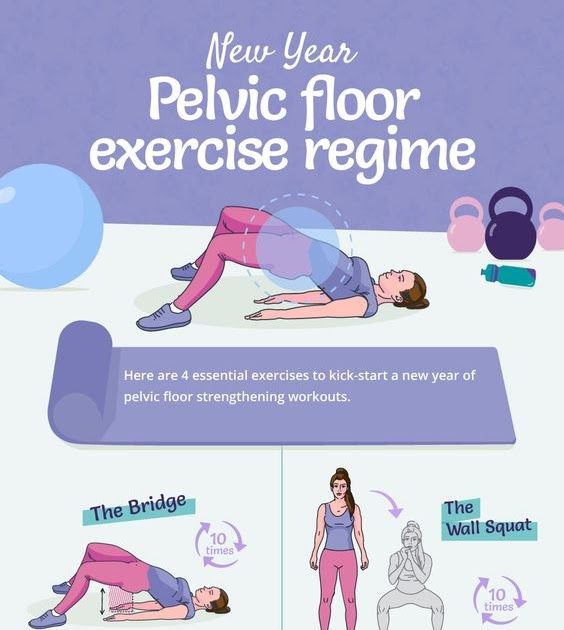 nine0005
nine0005
It is better to coordinate the training program with specialists, because people are different, and what suits one may not be suitable for another. But there are some general rules:
-
Avoid high-impact or high-intensity exercise that reduces pressure on the pelvic floor.
-
Don't lift heavy things unless absolutely necessary.
nine0025 -
Tighten your pelvic floor muscles before lifting weights.
There are two ways to assess pelvic floor loading. It is great if during the exercise there is a feeling of heaviness or urine leaks, and if, while doing the exercise, you cannot tighten the muscles of the pelvic floor.
Constantly thinking about the pelvic floor muscles during an hour-long workout is unrealistic, but it is useful to pay attention to them regularly. If you can't pull in and compress your muscles while doing a squat, bicep curl, or mountain biking, cut back on your workout or opt for something lighter.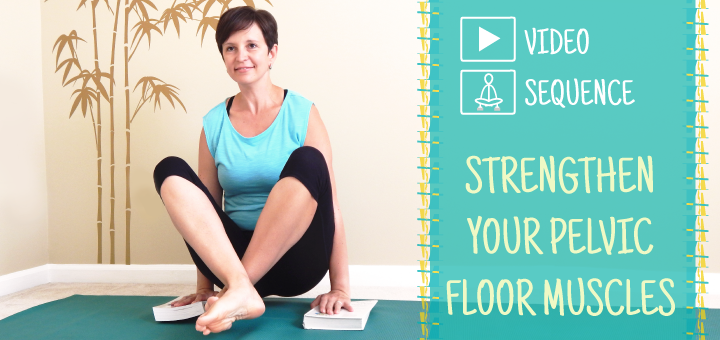 If your pelvic floor is not ready for running, you can take a walk in the hills. If five squats are exhausting, do three. Over time, you will progress. nine0005
If your pelvic floor is not ready for running, you can take a walk in the hills. If five squats are exhausting, do three. Over time, you will progress. nine0005
How to avoid pelvic floor dysfunction?
Alas, no one knows for sure. Theoretically, you need to strengthen the muscles of the pelvic floor with the help of special exercises. Athletes recommend including these exercises in your regular workouts: 3 sets of 8-12 maximum compressions, 3-4 times a week. Unfortunately, there is no certainty that athletes perform these exercises more correctly than ordinary people.
Conclusion
-
With dysfunction of the pelvic floor muscles, their training should be part of everyday life. Three times a day, do as many exercises (simply by pulling the muscles in or holding them in this position) as you can do well. Gradually increase the number of repetitions, but do not chase the number.
-
While doing other exercises, constantly listen to the state of the pelvic floor.
 Replace any exercise with an easier option if it causes a feeling of tension, heaviness, or vulnerability in the pelvic floor. nine0005
Replace any exercise with an easier option if it causes a feeling of tension, heaviness, or vulnerability in the pelvic floor. nine0005 -
Before lifting heavy weights or intense exercise, strengthen your pelvic floor and deep abdominal muscles and frequently check how your pelvic floor muscles work during exercise.
-
When choosing a set of exercises, be sure to consult with experts. An individual program is better than general recommendations.
-
And most importantly. Before you start strengthening your pelvic floor muscles, make sure you really have dysfunction. Many of its symptoms, including incontinence, can be caused by other causes, and in some cases, tightening the pelvic floor muscles will not help or hurt. nine0005
Pelvic floor exercises (Kegel exercises) for men
ShareTime to read: Approximately 2 min.
This information will help you learn how to do pelvic floor exercises (Kegel exercises).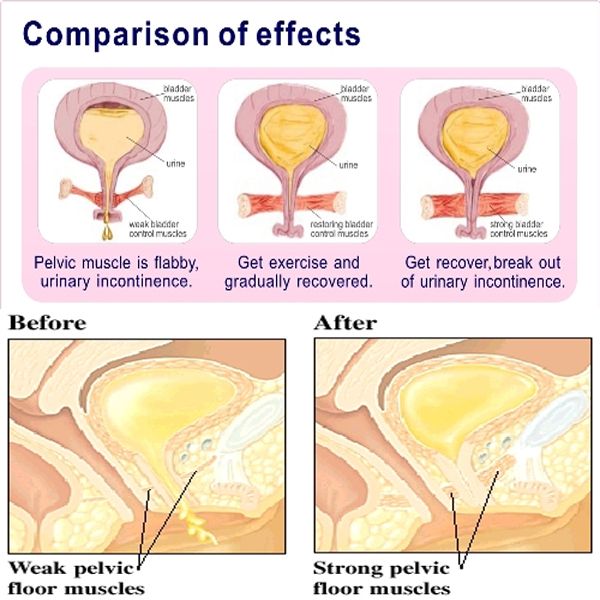
About Kegel Exercises
The main purpose of Kegel exercises is to help you strengthen your pelvic floor muscles. These muscles support your bladder and intestines. nine0005
With Kegel exercises you can:
- Control or prevent urinary incontinence. Incontinence is the leakage of urine and stool (feces) that you cannot control.
- strengthen your sexual health.
About the pelvic floor muscles
The pelvic floor muscles line the pelvic cavity and support the pelvic organs (see figure 1). These are the muscles that relax during urination (when you go to the toilet in a small way) and during passing gases or bowel movements (when you go to the toilet in a big way). You also use these muscles to hold urine and prevent leakage. nine0005
Figure 1 Pelvic floor muscles
Pelvic floor muscle determination
Pelvic floor muscles must be determined before performing Kegel exercises. Think about what muscles you use to interrupt the stream of urine when urinating, concentrate on them. Don't do this often, as stopping the flow of urine every time you urinate can be harmful.
Think about what muscles you use to interrupt the stream of urine when urinating, concentrate on them. Don't do this often, as stopping the flow of urine every time you urinate can be harmful.
How to do Kegel exercises
Make sure you urinate to keep your bladder empty before doing Kegel exercises. nine0005
When you're ready, start doing the following:
- To begin, pull in your pelvic floor muscles and hold for 5 seconds. To do this, imagine that you are pulling in and lifting the genitals.
- Do not hold your breath. Counting out loud will keep you from holding your breath.
- After 5 seconds, slowly and completely relax the muscles, holding them in this state for 5 seconds.
- Repeat the exercise 10 times and do it at least 3 times daily. nine0025
Your pelvic floor muscles may become tired during this exercise. In this case, stop doing the exercise and start it later.
This exercise does not involve the abdominal muscles, legs or buttocks. Exercising these muscles will not help you regain urinary control or improve your sexual health.
Exercising these muscles will not help you regain urinary control or improve your sexual health.
As you continue with these exercises, gradually increase the amount of time the pelvic floor muscles are contracted and relaxed. Start with 5 seconds and gradually build up the time each week until you reach 10 seconds. nine0005 back to top of page
When to do Kegel exercises
Most people prefer to do Kegel exercises while lying in bed or sitting in a chair. They can be done in any position convenient for you. Doing Kegel exercises while standing can be very helpful, as urine leakage usually occurs in this position.
To prevent leakage of urine, try a Kegel exercise before you:
- stand up;
- walk; nine0025
- go to the toilet;
- to sneeze or cough;
- laugh.
Doing these exercises will help you strengthen your pelvic floor muscles and reduce urine leakage.
Do not do Kegel exercises if you have a Foley catheter (thin, flexible tube) in place.
Pain and Kegel exercises
Kegel exercises should not cause pain. Many find them simple and relaxing. But if you use the wrong muscles when doing them, you may experience discomfort. nine0005
- If you experience pain in your back or abdomen after doing Kegel exercises, you may be using your abdominal or back muscles instead of your pelvic floor muscles.
- If you have a headache after doing Kegel exercises, you may be tightening your chest muscles and holding your breath.
When should you contact your healthcare provider?
Call your healthcare provider if:
- concern about bowel, bladder or sexual function;
- difficulty concentrating on pelvic floor muscles;
- pain when doing Kegel exercises;
- difficulty doing Kegel exercises;
- pelvic pain;
- questions requiring referral to a pelvic physiotherapist.
